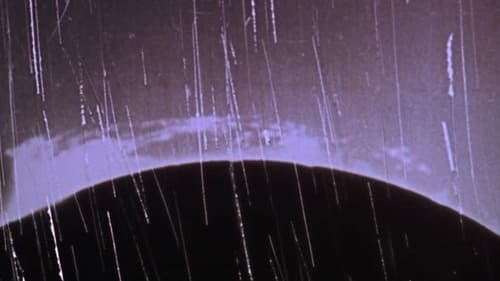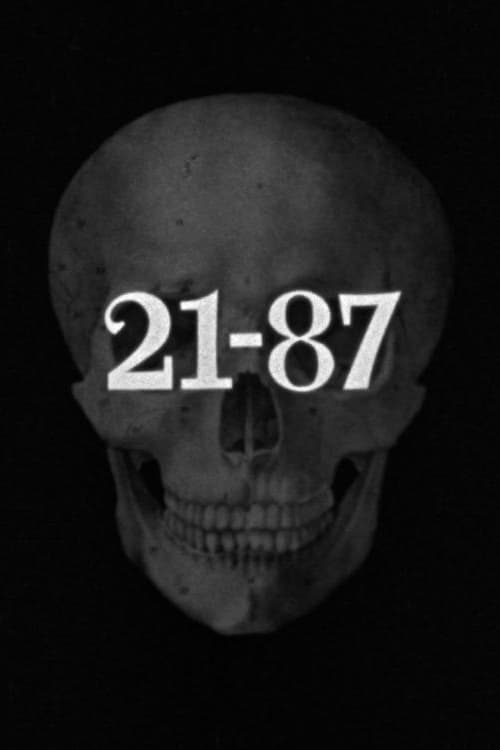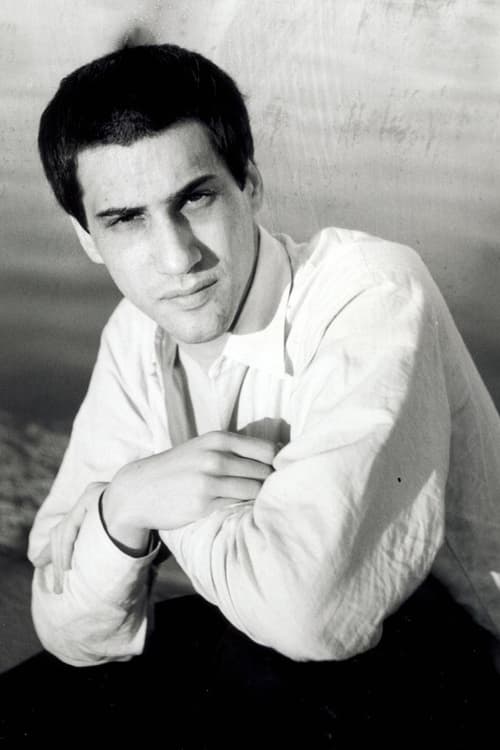21-87 (1963)
Gênero : Fantasia
Runtime : 10M
Director : Arthur Lipsett
Sinopse
"21-87 is a 1963 Canadian abstract film created by Arthur Lipsett that lasts 9 minutes and 33 seconds. The short film, produced by the National Film Board of Canada, is a collage of snippets from discarded footage found by Lipsett in the editing room of the National Film Board (where he was employed as an animator), combined with his own black and white 16mm footage which he shot on the streets of Montreal and New York City, among other locations."

Cut up animation and collage technique by Harry Smith synchronized to the jazz of Thelonious Monk's Mysterioso.

A sociopath gathers and drugs groups of college students to bring out their existing suicidal tendencies to the surface then walks among them to enjoy and record their deaths.

A pre-internet mash-up that mixes “Peanuts” and David Lynch’s “Blue Velvet.”

An abstract animated short by Michael Theodore.

Animal Charm makes videos from other people's videos. By compositing TV and reducing it to a kind of tic-ridden babble, they force television to not make sense. While this disruption is playful, it also reveals an overall 'essence' of mass culture that would not be apprehended otherwise. Videos such as Stuffing, Ashley, and Lightfoot Fever upset the hypnotic spectacle of TV viewing, revealing how advertising creates anxiety, how culture constructs "nature" and how conventional morality is dictated through seemingly neutral images. By forcing television to convulse like a raving lunatic, we might finally hear what it is actually saying.

In an effort to cure her smoking habit a middle-aged woman discovers that she can communicate with her long lost son while watching a Halloween safety program on TV. After suffering a nervous breakdown, her husband, a used car salesman, is revitalized when he travels back in time to drive the first car he ever sold. Seventeen years later a powerful canned food manufacturer crashes the same car into a toaster truck while endorsing a brand of yams on live TV. At the funeral his clergyman experiences a crisis of faith when he and a lifelike Mexican continue their search for a married couple who have befriended an insect who enjoys drinking lime soda. They later meet a young man whose bizarre murder scheme involves four innocent members of an experimental rock band who have all given up smoking.

A spectacular collaboration between prize winning Canadian animator Pierre Hébert and cutting edge electronics wizard Bob Ostertag. Outrageous noise sampling interacts with spontaneously created live animation in this groundbreaking improvisational work, refined and perfected for an exclusive DVD release.

Produced in 1993, The Grand Delusion is one of our most completely realized works. In addition to taking the usual form of a Tape-beatles release (a CD), The Grand Delusion was also delivered in the form of an ‘expanded cinema’ presentation involving three-screen motion picture projections and sound. The screen space for this production is intended to be three times the width of the normal 3 to 4 "Edison" aspect ratio of 16mm. The presentation only uses the full width intermittently, so transitions from one form to the next has been translated here by means of a video effect. As a live performance presentation, The Grand Delusion has been screened in dozens of venues across North America and Europe.

Our Favorite Things is a new DVD/CD release from reigning Kulture Kut-up Kings Negativland. Twenty-seven years of the group's "greatest hits" have become all-new moving pictures in this amazing, years-in-the-making package. Created with 18 other filmmakers from all over the USA (and one a capella group from Detroit), Our Favorite Things is a collaborative project that takes Negativland's sound explorations into the world of film and video. What emerges is a darkly cracked look at 21st century America, juxtaposing paranoia, torture, control, power, weapons, fear, suicide, cola wars, mental illness, and intellectual property issues with the lighter side of dopey advertising, cartoon characters, cleaning products and Jesus.

An accurate depiction of the basic tenets of northern Mahayana Buddhism, cast into living or "experiential" form, consistent with powerful mantras heard on the soundtrack of the film. Tarthang Tulku, a Tibetan Lama, was the advisor.

Animation, also of a new order in the recent series of short works. Mostly on black space, the figures in blue perform a very compact and jewel-like opera in surreal form, again to Satie’s piano music. Ideally, the film should be projected on a 30" wide white card sitting on a music stand, center stage of a large auditorium or music hall, with sound from the projector piped into the big speaker system. The film is most effective this way, but can be shown normal-size also

Collage film about R.D. Laing, who spearheaded the social and cultural revolutions of the 1960s, weaves archival material with his own filmic observations. For Laing normality meant adjusting ourselves to the mystification of an alienating world.

A creation myth realized in light, patterns, images superimposed, rapid cutting, and silence. A black screen, then streaks of light, then an explosion of color and squiggles and happenstance. Next, images of small circles emerge then of the Sun. Images of our Earth appear, woods, a part of a body, a nude woman perhaps giving birth. Imagery evokes movement across time. Part of the Dog Star Man series of experimental films.

The film tells a story of Mariana, a nurse who leaves Lisbon to accompany an immigrant worker in a comatose sleep on his trip home to Cape Verde. The devoted Portuguese nurse took a journey only to find herself lost in abstract drama.

A tale about a kid, a samurai mime, and a stripper who all try to defeat a warlord and an evil clown who have successfully turned a countryside into a never ending nightmare filled with horrible monsters.

The Darkness of Day is a haunting meditation on suicide. It is comprised entirely of found 16mm footage that had been discarded. The sadness, the isolation, and the desire to escape are recorded on film in various contexts. Voice-over readings from the journal kept by a brother of the filmmaker’s friend who committed suicide in 1990 intermix with a range of compelling stories, from the poignant double suicide of an elderly American couple to a Japanese teenager who jumped into a volcano, spawning over a thousand imitations. While this is a serious exploration of a cultural taboo, its lyrical qualities invite the viewer to approach the subject with understanding and compassion.

Suggestion is the rock, and the physical evidence is the evanescent spray that breaks against the unseen. Transitive enharmonics of things touching in middair, an air which is Time—not an actual intersection, but with a consequence as powerful as predestination, a momentary fulfillment, a trail beyond mere pattern, like a streak of truth alive and uncontained, like something that runs through infinity slowing to leave condensation, sonority, a temperature. Lines crossing lines. Not there. There. Invisibilities smudging. Gesture and impression, optic suggestions, agents on and in the mind. Each with vibrations, dollops, whispers, throbs, particles and waves. A finger of pigment brushing a lip of language exchanging carriage supports, liquidities, fire. Moire of meanings. Micro settings in the heart. The time it takes. The very least one can say is to say The Extravagant Shadows is a major work. Humanly essential, adventurous and necessary.

We watch white shapes dancing on black background, which changes when the white shape fills up the screen completely, and black lines and figures bounce around on the now white background.

Here the artist creates a world of color, form, movement and sound in which the elements are in a state of controllable flux, the two materials (visual and aural) are subject to any conceivable interrelation and modification.






